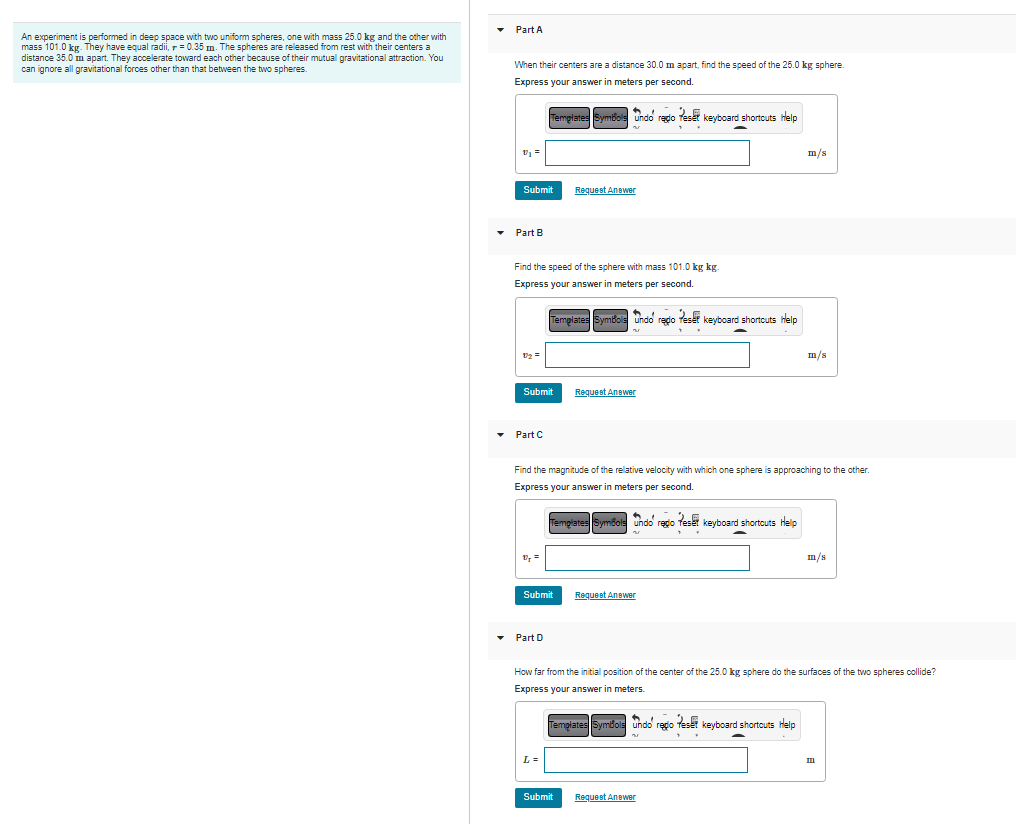An experiment is performed in deep space with two uniform spheres, one with mass 25.0 kg and the other with mass 101.0 kg. They have equal radil, = 0.35 m. The spheres are released from rest with their centers a distance 35.0 m apart. They accelerate toward each other because of their mutual gravitational attraction. You can ignore all gravitational forces other than that between the two spheres. ▾ Part A When their centers are a distance 30.0 m apart, find the speed of the 25.0 kg sphere. Express your answer in meters per second. Templates Symbols Undo redo Peser keyboard shortcuts Help Request Answer Part B Find the speed of the sphere with mass 101.0 kg kg. Express your answer in meters per second. Templates Symbols Submit Submit Undo rego Peser keyboard shortcuts Help m/s Request Answer ▾ Part C Find the magnitude of the relative velocity with which one sphere is approaching to the other. Express your answer in meters per second. Templates Symbol undo regio Reset keyboard shortcuts Help m/s 1₂= m/s
Gravitational force
In nature, every object is attracted by every other object. This phenomenon is called gravity. The force associated with gravity is called gravitational force. The gravitational force is the weakest force that exists in nature. The gravitational force is always attractive.
Acceleration Due to Gravity
In fundamental physics, gravity or gravitational force is the universal attractive force acting between all the matters that exist or exhibit. It is the weakest known force. Therefore no internal changes in an object occurs due to this force. On the other hand, it has control over the trajectories of bodies in the solar system and in the universe due to its vast scope and universal action. The free fall of objects on Earth and the motions of celestial bodies, according to Newton, are both determined by the same force. It was Newton who put forward that the moon is held by a strong attractive force exerted by the Earth which makes it revolve in a straight line. He was sure that this force is similar to the downward force which Earth exerts on all the objects on it.

Step by step
Solved in 3 steps with 3 images








